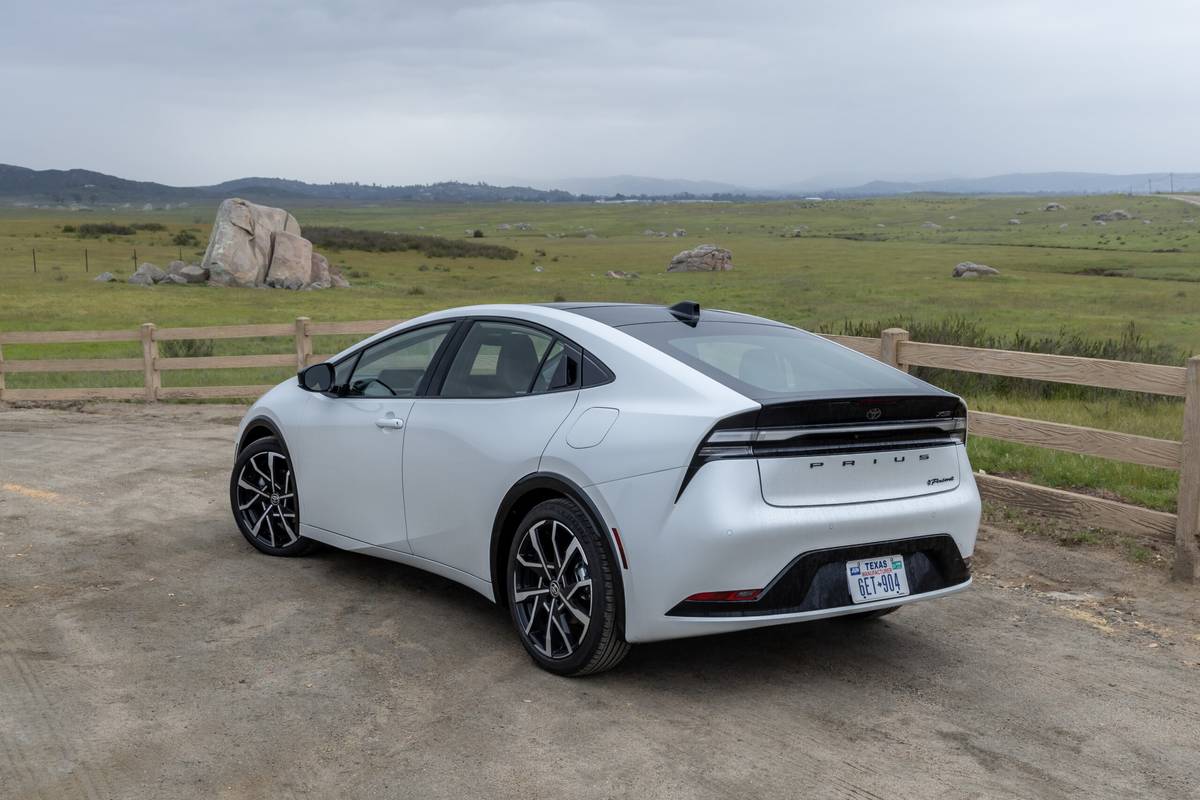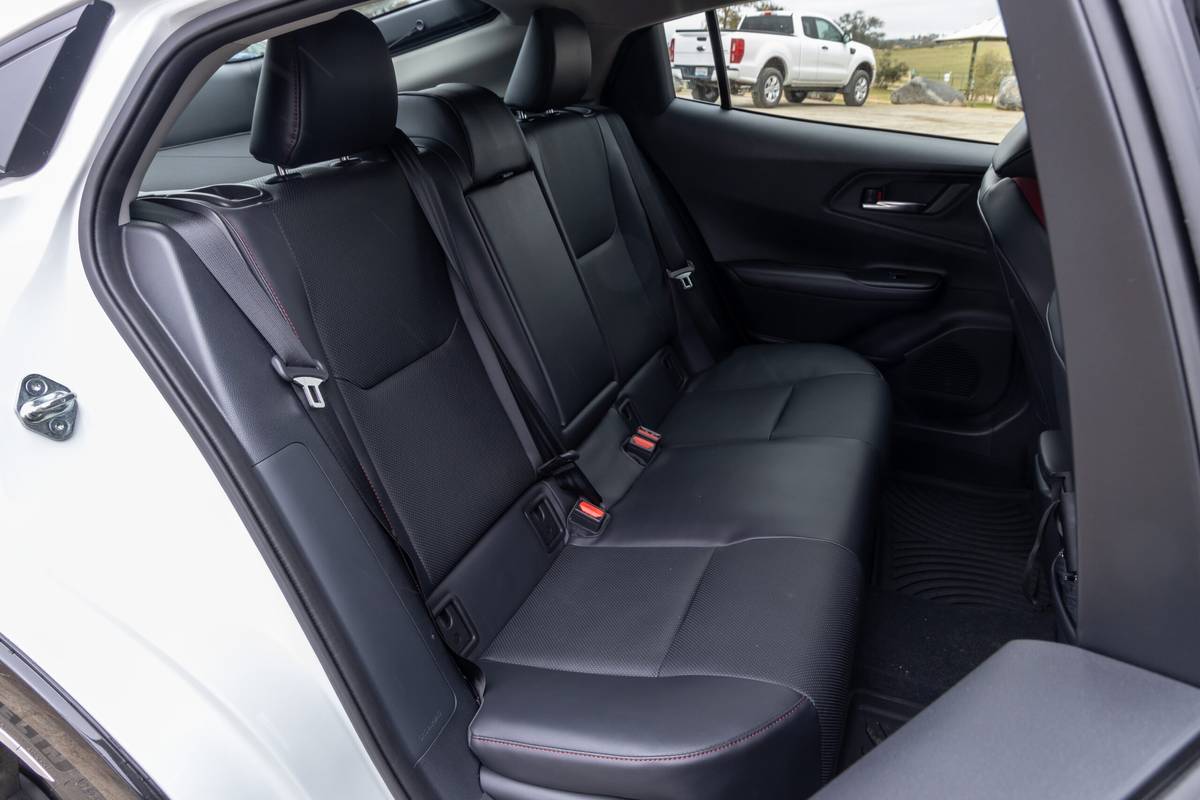Is the 2023 Toyota Prius Prime a Good Plug-in Hybrid? 4 Pros and 3 Cons

A complete redesign brings big changes to the Toyota Prius Prime plug-in hybrid for 2023 — for better and for worse. The most obvious update is the same stylish, smoother new shape shared with non plug-in versions of the new Prius.
Related: 2023 Toyota Prius Prime Review: Sportier for Sure, But Why?
Underneath, however, is where things get interesting. The Prius Prime’s gasoline engine gets an increase of 99 horsepower over the outgoing model, making for livelier acceleration. A more athletic chassis also makes the new plug-in more enjoyable to drive, while still providing a comfortable ride. On the other hand, that sleek new shape comes at the cost of interior room, especially for rear passengers. The quality of interior accommodations is also somewhat disappointing, with materials and feel that are not as nice as found with some competitors, including the Kia Niro Plug-In Hybrid.
Cars.com Road Test Editor Brian Normile recently had a chance to get to know the new Prius Prime and came away with some good things to say, but he also found some annoying faults. His complete review can be found by hitting the link above; alternatively, you can read on for an overview of four things we like about the 2023 Toyota Prius Prime and three things we don’t.
Things We Like

1. Livelier Acceleration
With a new 2.0-liter four-cylinder engine bringing a big power boost compared with the outgoing version and 24-26 hp more than the conventional Prius hybrid, the new Prius Prime plug-in is the liveliest Prius yet. A 0-60 mph time of just 6.6 seconds may not be supercar fast, but a system total of 220 hp makes for a pretty quick gas saver.
2. A Sporty Prius?
The added power combined with a new chassis and improved steering response make the new Prius Prime fun to toss around in corners while still providing a comfortable and absorbent ride with the optional 19-inch wheels and tires. Even without the added security of all-wheel drive (available only with the conventional Prius), handling is secure and confidence-inspiring. The biggest limitation in the twisties are its tires, which are designed more for fuel efficiency than grip.
3. Better Brakes
Brake pedal feel is better than we’ve experienced in previous incarnations of the Prius — and many other regenerative braking systems. The pedal has a direct and linear feel, and it’s easily modulated, with little of the quirks of similar systems that are designed more for maximum efficiency than the driving experience.
4. Fuel Frugal
SE trims are the most fuel-efficient in the Prius Prime lineup, returning an estimated 53/51/52 mpg city/highway/combined thanks in part to 17-inch wheels and tires. XSE and XSE Premium trims are fitted with larger 19-inch wheels but return a still-respectable 50/47/48 mpg. Better still is between 39 and 44 miles of range for driving solely on electric power, trim depending; that’s a notable increase over the 25 miles of electric-only range in the previous version and better than the Niro PHEV’s range of 33 miles.
More From Cars.com:
- Up Close With the 2023 Toyota Prius and Prius Prime: Function Finally Meets Form
- Redesigned 2023 Toyota Prius Ramps Up Efficiency, Safety Tech
- What Are the Most Fuel-Efficient Cars?
- Toyota Unveils EV Incentive Calculator for Buyers
- 2023 Cars.com Affordability Report: Best Value New Cars
Things We Don’t Like

1. Steering Wheel Position
Toyota has finally relocated the instrument panel from the center of the dash to in front of the driver with all versions of the redesigned 2023 Prius. While that’s a good thing, the instrument pod is small and mounted low, resulting in an awkward and unusually low steering-wheel position because you have to look over the rim to see the gauges. That means it can be both uncomfortable and less than ideal for control.
2. Reduced Interior Room
The price of a more stylish profile is less interior room, with backseat passengers paying the highest penalty. Rear headroom isn’t really adequate for taller passengers, and they’ll have to slouch or angle their heads to fit under the low roof.
3. Mixed Bag of Infotainment
A new infotainment system brings a crisp and vivid touchscreen measuring either 8 inches or 12.3 inches depending on trim, and it’s an improvement over the old system. Standard wireless Android Auto and Apple CarPlay is also a plus, but the system can be awkward to use, with a suboptimal menu structure and the lack of a home button. Overall, the system is not as good as some competitors, namely the Niro PHEV, and many features are either data-based or require a subscription.
Related Video:
Cars.com’s Editorial department is your source for automotive news and reviews. In line with Cars.com’s long-standing ethics policy, editors and reviewers don’t accept gifts or free trips from automakers. The Editorial department is independent of Cars.com’s advertising, sales and sponsored content departments.
Featured stories




